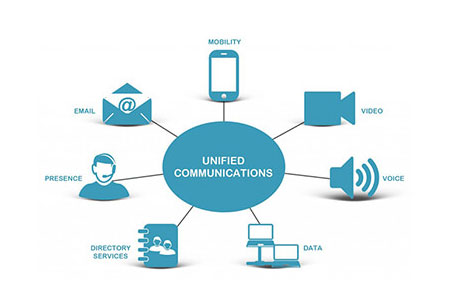THANK YOU FOR SUBSCRIBING
Unified Communication Provides Smooth Circulation of Information
Unified communications refer to a unified platform that takes all communication channels like chat, video, voice, web and more and integrates them in one place. Instead of choosing different tools, an organization uses only one medium...

By
Apac CIOOutlook | Wednesday, December 12, 2018
Stay ahead of the industry with exclusive feature stories on the top companies, expert insights and the latest news delivered straight to your inbox. Subscribe today.
Communication is one of the most critical aspects of a business. Employers build relationships with their employees based on interaction. In today’s competitive landscape, an organization must be efficient and must improvise with tricky situations. Lack of communication can worsen the situation.
Multiple modes of communication such as voice, video, email, and instant messaging can cause confusion, and they don’t serve the purpose quite right. A few of these modes can act opposite to how they intended to. Resolving the time, cost, and complexity issues brought forth Unified communications (UC).
Unified communications refer to a unified platform that takes all communication channels like chat, video, voice, web and more and integrates them in one place. Instead of choosing different tools, an organization uses only one medium for various communication needs, saving time and resources in the process. UC solutions are smart, secure, economical, and time-saving. Organizations around the world are recognizing UCs potential and adopting it at an impressive speed.
How UC Simplifies Communication
Organizations realize that using an array of communication modes causes a few concerns. Employees have to understand the functioning of each tool, and they spend a significant amount of time shuffling between them. In larger organizations with a lot of employees and various tools, the entire process takes a sizeable chunk of bandwidth and affects productivity. A UC platform provides convenience as the employees get all the information at one place. Instead of multiple apps, employees use a centralized tool to log in to.
UC saves a lot of time and resources which can be used in other areas of the organization such as increasing revenue, generating leads, improving customer service and more. Various tools need hardware and software upgrades, licensing, support and maintenance. A centralized UC tool eliminates the need for other tools reducing the overall communication cost to a fraction.
Future of UC
UC service providers are continually providing working on the technology for smarter communication solutions for business. Businesses are focusing on unified communications software to improve flexibility, facilitate seamless communication, encourage remote operations, and improve employee collaboration. Many organizations are looking to eliminate conventional communication tools and integrate UC into their enterprise architecture to increase productivity. Private and hybrid cloud-based communication tools are the future as many hybrid solutions providers are taking the lead realizing the need for a unified communication platform.





